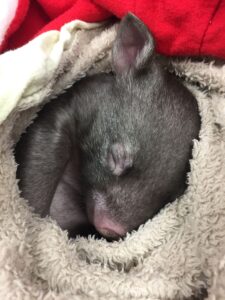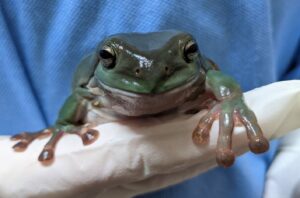Advices
National Emergency Animal Disease Hotline
Please contact the National Emergency Animal Disease Hotline directly on 1800 675 888 to report this event.
More information on emergency animal diseases and reporting can be found on the Australian Government Department of Agriculture, Fisheries and Forestry website: https://www.outbreak.gov.au/prepare-respond/report
Species:
Clinical Signs:
Advice Types:
General Bird Advice
Australia is home to more than 800 bird species, and nearly half of these species are only found here. Birdwatching is a great way to learn more about Australia’s unique species and spend time outdoors in the environment.
Sick birds:
Sick or injured birds should be taken to a local veterinarian as soon as possible.
Handling birds:
Only handle birds if they appear to be sick or injured. Most small birds can be safely handled with a small towel and placed into a box for transport. Birds can carry diseases that can infect humans, so always practice good hygiene. Wear gloves if possible and wash your hands thoroughly with soapy water or use hand sanitiser after you have finished.
Do not handle birds of prey (owls, eagles, etc.), large waterbirds (e.g. pelicans) or emus as they may cause injury. Contact WIRES on 1300 094 737 for assistance.
Bird Identification:
You can try and identify the species of bird you have seen using the Birds in Backyards ‘Bird Finder’ app here: https://www.birdsinbackyards.net/finder
Get involved with birds:
If you are interested in getting more involved with monitoring and conservation of birds in your area, you can find opportunities with BirdLife Australia: https://birdlife.org.au/volunteer-opportunities/
Feeding backyard birds: (Link to feeding birds advice)
Species:
Clinical Signs:
Numbers:
Advice Types:
Mass Bird Mortality
You have reported a mass bird mortality event (more than 10 birds found dead) in your area. These events are significant and may be due to an outbreak of disease, exposure to toxins or pollutants, or other causes. Birds may function as an indicator species for a problem in the ecosystem, including possible threats to human health. These events are essential to report quickly and your assistance is greatly appreciated.
Please call the Emergency Animal Disease Hotline immediately on 1800 675 888 to report this event.
You will be directed to the relevant State Government authority, and they will advise you on the next steps.
For further information on some potential causes of mass bird mortalities, please follow the links below to Factsheets by Wildlife Health Australia.
Pesticide toxicity: https://wildlifehealthaustralia.com.au/Portals/0/Documents/FactSheets/Avian/Pesticide_Toxicity_in_Australian_Native_Birds.pdf
Species:
Clinical Signs:
Advice Types:
Avian Influenza (‘Bird flu’)
Avian influenza (also known as ‘bird flu’) is a virus that typically infects birds. Strains of avian influenzas may be low pathogenicity (does not usually cause serious disease) or high pathogenicity (capable of causing serious disease).
Since 2021, a new strain of highly pathogenic avian influenza has been circulating around the world and causing large numbers of deaths in a variety of bird species, including domestic chickens. This strain has not been detected in Australia, but there is concern that it may be introduced. If introduced to Australia, this viral strain would have serious impacts on Australia’s agricultural industry and our native birds.
Affected birds may:
- Be found dead, especially in groups.
- Show abnormal behaviour including lack of coordination, walking or swimming in circles, or be unable to fly.
- Have diarrhoea (runny poo).
- Have mucus around the eyes or beak.
- Cough, sneeze or have difficulty breathing.
Any findings that are suspicious for avian influenza should be reported immediately to the Emergency Animal Disease Hotline 1800 675 888.
People can be infected with some strains of Avian Influenza, although this is uncommon. Avoid contact with birds that may be infected. If you do come into contact, wash your hands well with soapy water or use hand-sanitiser.
Find out more information about human risk on the NSW Health website: https://www.health.nsw.gov.au/Infectious/factsheets/Pages/avian-influenza.aspx
Find out more about Avian Influenza here:
Wildlife Health Australia https://wildlifehealthaustralia.com.au/Portals/0/Incidents/HPAI_Advice_for_people_who_encounter_sick_or_dead_wild_birds_V2Aug23.pdf?ver=sr0HWouhy14Wli2Zm1fUHg%3d%3d
NSW Department of Primary Industries
https://www.dpi.nsw.gov.au/animals-and-livestock/poultry-and-birds/health-disease/avian-influenza
Species:
Clinical Signs:
Numbers:
Advice Types:
Fledgling Birds
Many young birds will leave the nest and spend several days on the ground while they are learning to fly. This process is called fledging, and birds of this age are called fledglings. Fledgling birds will usually have mostly smooth adult feathers with a few fluffy feathers. They should be bright and active and may be calling out. You might see them flapping and jumping, although they may not seem to be able to fly at all. The parent birds should be close by monitoring the fledgling and may be bringing it food occasionally.
Unless they appear injured or in danger (e.g. from traffic or domestic pets) fledgling birds should be left alone.
If you think a bird you have found might be a fledgling but are unsure, please contact WIRES on 1300 094 737 or your local veterinary clinic for more advice.
Species:
Clinical Signs:
Numbers:
Advice Types:
Orphaned Pouch Young
Female marsupials carry their young (called joeys) in a pouch outside their body. The joey is quite protected inside the pouch and may survive a traumatic event that kills the mother. Therefore, it is very important to check the pouch of deceased female marsupials to make sure that there is no live joey inside.
Pouch joeys are dependent on species-specific milk and require specialised care. Do not feed them anything. They should be kept warm and quiet and transported to a veterinarian or experienced wildlife carer as soon as possible.
If you have found an orphaned joey, or a deceased female marsupial and are unable to check the pouch, please contact WIRES Riverina on 1300 094 737 to get in touch with a local wildlife rescuer.
If you handle any wildlife (including pouch-checking deceased adults) make sure that you practice good hygiene. Wear gloves if possible and wash your hands with soapy water or use hand-sanitiser afterwards.

Species:
Clinical Signs:
Numbers:
Advice Types:
General Advice for Handling Wildlife
Wildlife may cause injury if not handled correctly or have diseases that can infect people. You should not attempt to rescue a native animal if you don’t have the proper skills.
If it is safe for both you and the animal, here are some things you can do while waiting for a wildlife rescuer or before taking the animal to a veterinarian:
- Cover the animal with a towel or blanket.
- Try to keep the animal calm and safe by placing it in a cardboard box or covered cage if you are able. Ensure the box or cage is secure so the animal can’t escape.
- Put the box somewhere warm, dark and quiet and do not offer any food or water unless advised by a vet or wildlife rescuer.
- If it is an orphaned young animal or a bird, it will need to be kept warm.
- Keep any pets and people well away from the area to reduce stress
- Practice good hygiene during and after handling an animal, wear gloves if possible and wash your hands thoroughly with soapy water or use hand sanitiser afterwards.
- If you are bitten or scratched, clean the injury with warm water and soap (or disinfectant), and seek medical advice.
DO NOT handle bats (flying-foxes or microbats), snakes, monitor lizards (goannas), large macropods (kangaroos or wallabies), raptors (eagles, falcons or hawks) as these animals all require specialist handling.
Only licenced wildlife carers and registered veterinarians can take sick, injured or orphaned wildlife into care – you can’t keep them in your home and look after them.
Species:
Clinical Signs:
Numbers:
Advice Types:
General Advice for Disposing of Dead Wildlife
If you have found one, or a small number of deceased wildlife on your private property it is unlikely that an investigation will be initiated unless there are unique circumstances.
It is important to be aware that you may still be able to catch infectious diseases from deceased wildlife.
If you need to dispose of deceased wildlife:
- Practice good hygiene – wear gloves and consider using a shovel or other tool to pick up the animal.
- Place the deceased animal inside a strong plastic bag, and then place this bag inside another bag.
- Small animals can usually be placed in your general waste bin for curb side collection. If you need to dispose of something larger, please contact your local council for advice.
- Always wash your hands well with soapy water or use hand-sanitiser after handling any wildlife or tools and equipment that have touched wildlife.
Species:
Clinical Signs:
Numbers:
Advice Types:
Exercise Caution with Birds of Prey (Raptors)
DO NOT TOUCH OR HANDLE Birds of Prey.
Birds of Prey (also known as Raptors) are eagles, hawks, owls and similar birds. They are hunting birds with very strong talons and large beaks which can cause serious injuries in people.
If you have identified a sick or injured Bird of Prey contact WIRES Riverina on 1300 094 737 for assistance.
Species:
Clinical Signs:
Numbers:
Advice Types:
General Frog Advice
Frogs and other amphibians are very sensitive to changes in their environment and may show the effects of these changes sooner than other species in the same location. Australia is home to over 200 species of frog, most of which are only found here. To protect these unique species, it is very important to understand what is happening with Australian frog populations.
Handling frogs:
Frog skin is extremely sensitive and can be damaged by the natural chemicals and bacteria that are on your hands. Always wear gloves if you need to handle a frog.
Sick frogs:
Sick or injured frogs should be taken to a local veterinarian as soon as possible.
Frog Identification:
The following links will help you identify the species of frog you have seen.
- Frog ID: https://www.frogid.net.au/about-frogid
- Frogs of Australia, by the Amphibian Research Centre: https://frogs.org.au/frogs/index.html
Get involved with frogs:
If you are interested in learning more about frogs and being involved in community conservation activities, check out the Frog and Tadpole Study Group of NSW here: https://www.fats.org.au/

Species:
Clinical Signs:
Numbers:
Advice Types:

